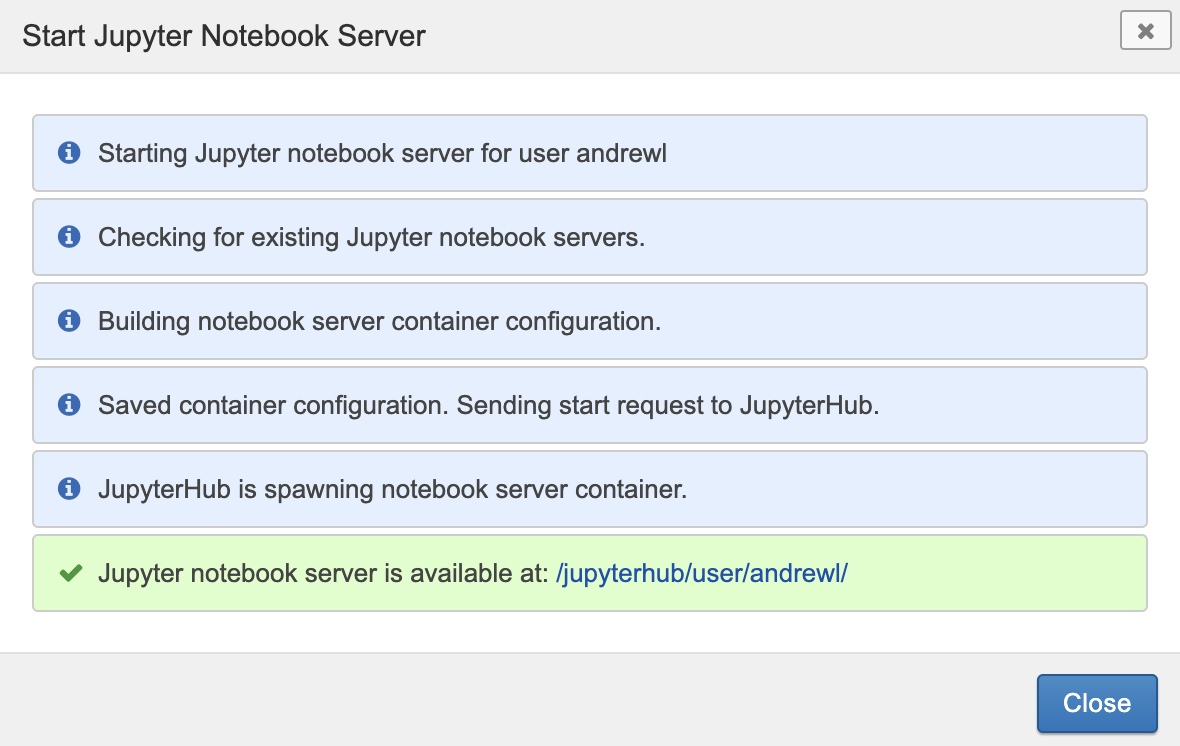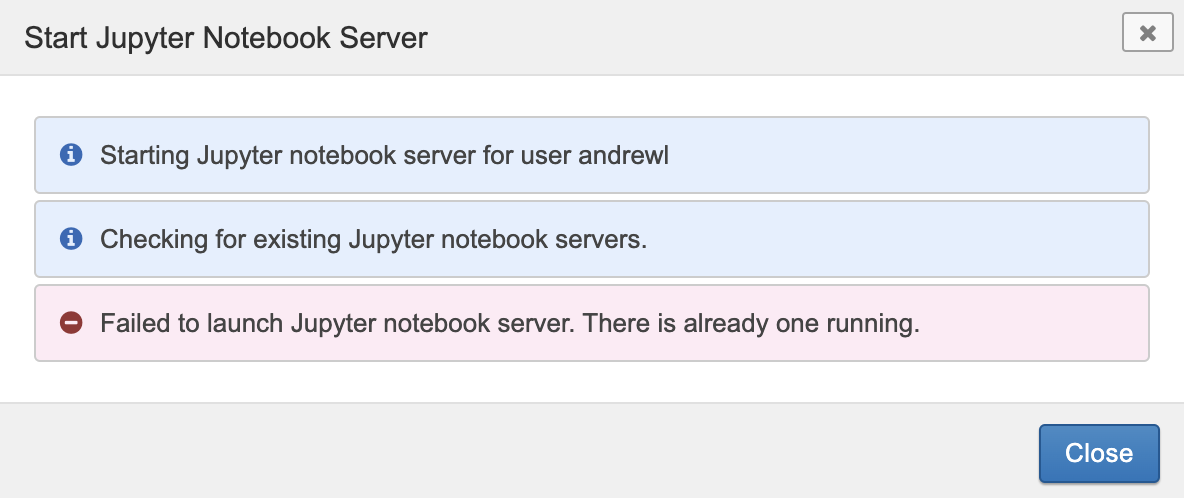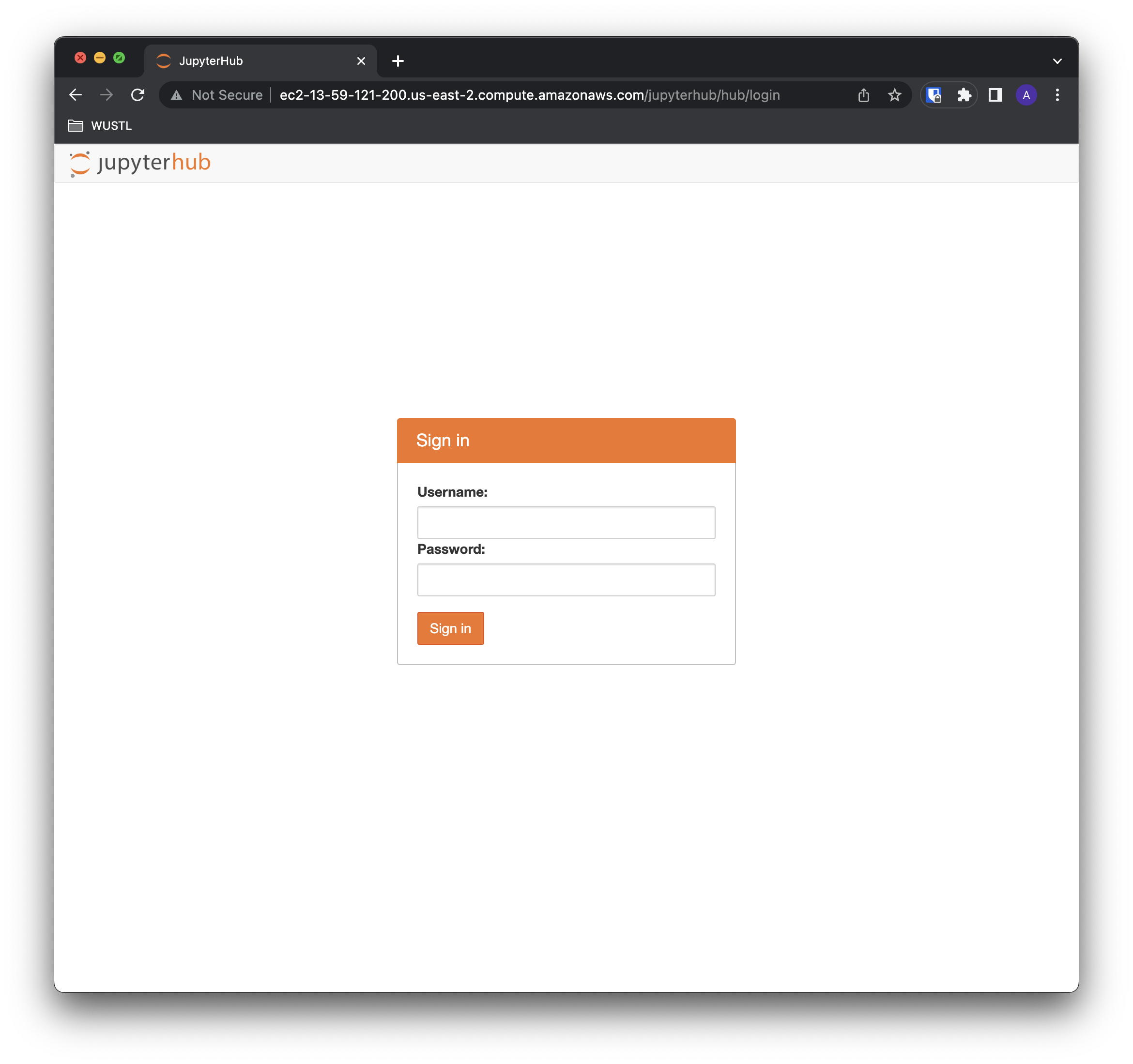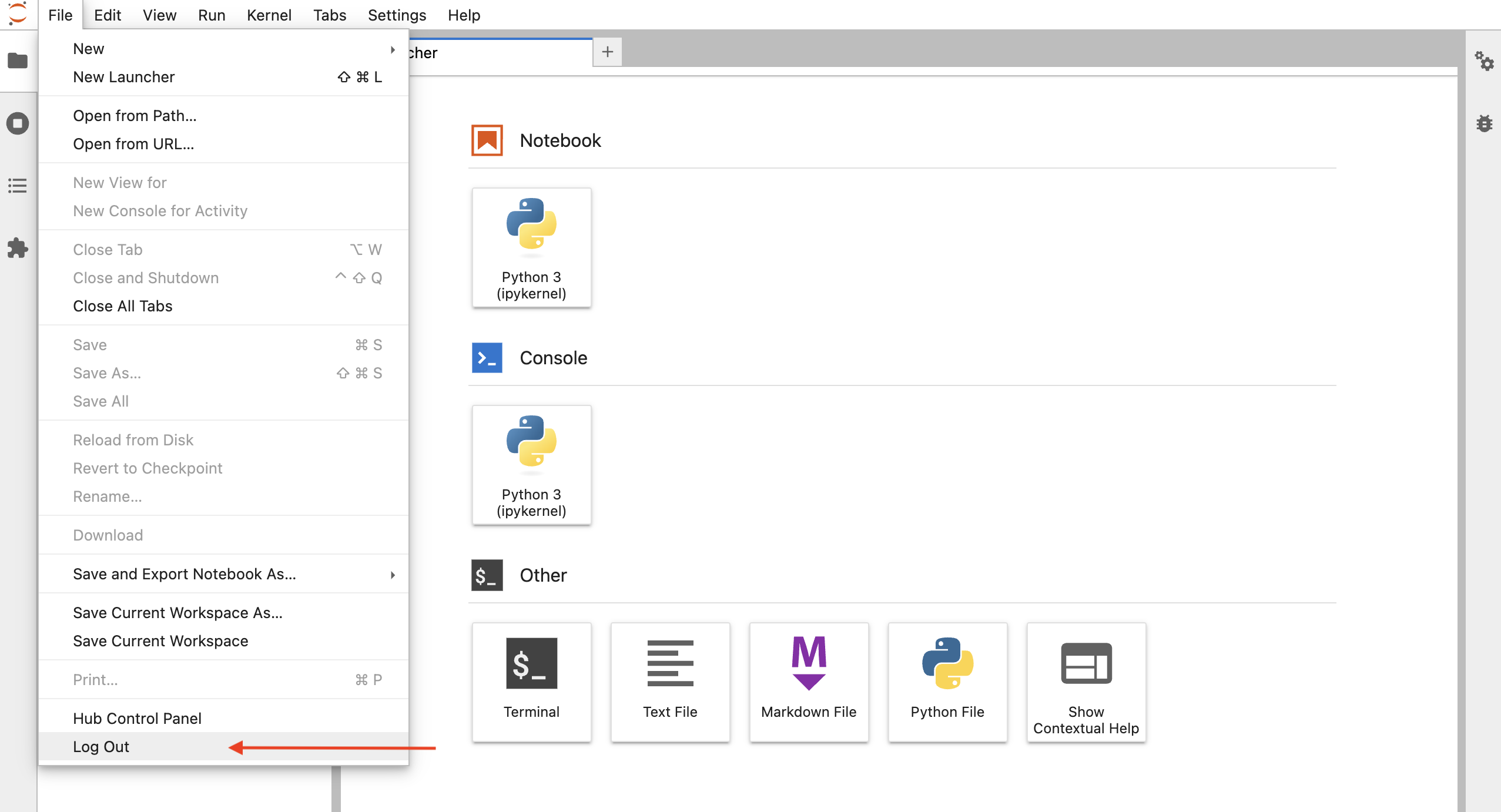Starting and Stopping Jupyter Notebooks
Prerequisites
Ensure that your administrator has enabled the use of Jupyter notebooks for your user account.
Starting a Jupyter Notebook
To start a Jupyter notebook navigate to a project, subject or experiment.
Look for the Start Jupyter Notebook action in the Actions menu. This action will only be visible if Jupyter notebook use has been enabled for your user account.
Click on 'Start Jupyter Notebook'. A prompt will appear asking you to select a Jupyter Environment and a Hardware configuration.
Jupyter Environment: The Jupyter environment you select will determine the software packages that are available within your Jupyter notebook server.
Hardware Configuration: The hardware configuration you select will determine the hardware resources (such as memory and CPU) allocated to your Jupyter notebook server.
After making your selections, click Start Notebook to launch your Jupyter notebook server.
Background Process
When you start the Jupyter notebook server, it will run as a background process. You can monitor the status of the Jupyter notebook startup process by locating the background processes activity tab at the bottom right of your screen. Expand this tab to view the details and status of your Jupyter notebook server.


When the Jupyter notebook server starts successfully, you will see a notebook icon in this activity tab. Clicking on this icon will take you directly to your Jupyter server, where you can begin working with your notebooks.

Please note that our testing indicates an average start time of less than 60 seconds for launching a Jupyter server. However, the duration may vary on your specific XNAT setup. During the startup phase of your Jupyter server, feel free to navigate to other pages within XNAT without any interruption.
If Jupyter failed to start, expand the dialog for more details.

JupyterHub Login
If you are asked to login to JupyterHub, use your XNAT username and password. JupyterHub will authenticate your credentials by verifying the information with XNAT.

Stopping a Jupyter Notebook
Please note that your Jupyter notebook server is associated with your XNAT user account, and logging out of XNAT does not automatically log you out of JupyterHub. To ensure a complete logout, you will need to log out of Jupyter separately from XNAT.
To log out of Jupyter, navigate to File → Log Out within your Jupyter interface. This action will successfully log you out of Jupyter, but it will not immediately stop your Jupyter container. To stop the Jupyter server and release the associated resources, you can use the Stop Jupyter option available in XNAT's top navigation menu.
Furthermore, there is an inactivity timeout plugin setting that can automatically stop an inactive Jupyter server. This feature helps optimize resource utilization by automatically terminating idle Jupyter servers after a certain period of inactivity. Your administrator may or may not have this feature enabled.

